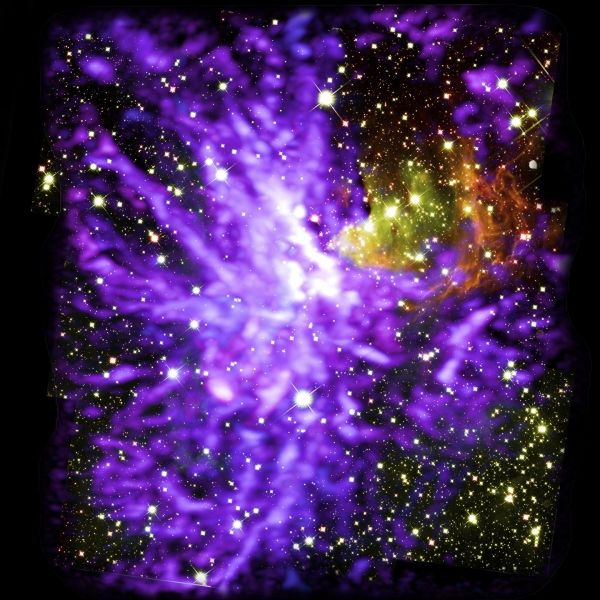Astronomers created a stunning new image showing celestial fireworks in star cluster G286.21+0.17.
Most stars in the universe, including our Sun, were born in massive star clusters. These clusters are the building blocks of galaxies, but their formation from dense molecular clouds is still largely a mystery.
The image of cluster G286.21+0.17, caught in the act of formation, is a multi-wavelength mosaic made out of more than 750 individual radio observations with the Atacama Large Millimeter/submillimeter Array (ALMA) and 9 infrared images from the NASA/ESA Hubble Space Telescope. The cluster is located in the Carina region of our galaxy, about 8000 light-years away.
Dense clouds made of molecular gas (purple ‘fireworks streamers’) are revealed by ALMA. The telescope observed the motions of turbulent gas falling into the cluster, forming dense cores that ultimately create individual stars.
Read more at: National Radio Astronomy Observatory
Image of star cluster G286.21+0.17, caught in the act of formation. This is a multiwavelength mosaic of more than 750 ALMA radio images, and 9 Hubble infrared images. ALMA shows molecular clouds (purple) and Hubble shows stars and glowing dust (yellow and red). (Photo Credit: ALMA (ESO/NAOJ/NRAO), Y. Cheng et al.; NRAO/AUI/NSF, S. Dagnello; NASA/ESA Hubble)


